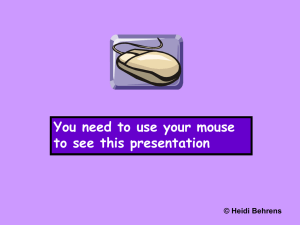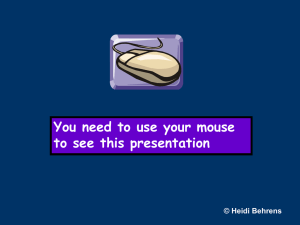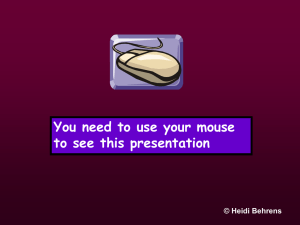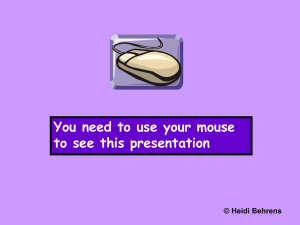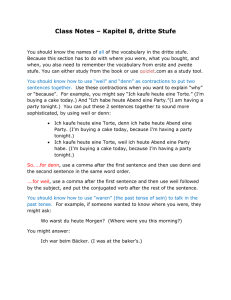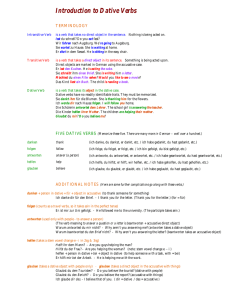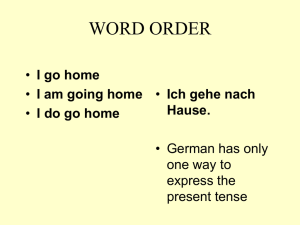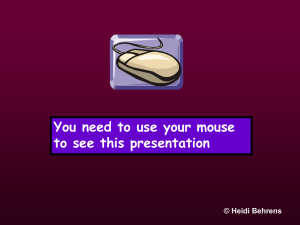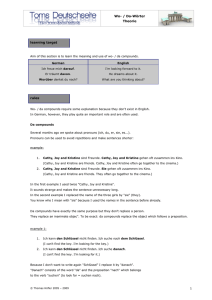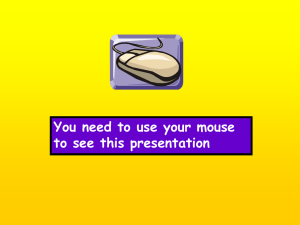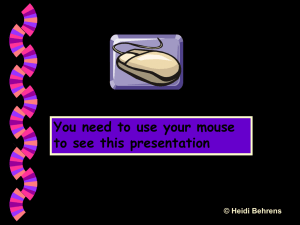The Australian guide to healthy eating
Werbung
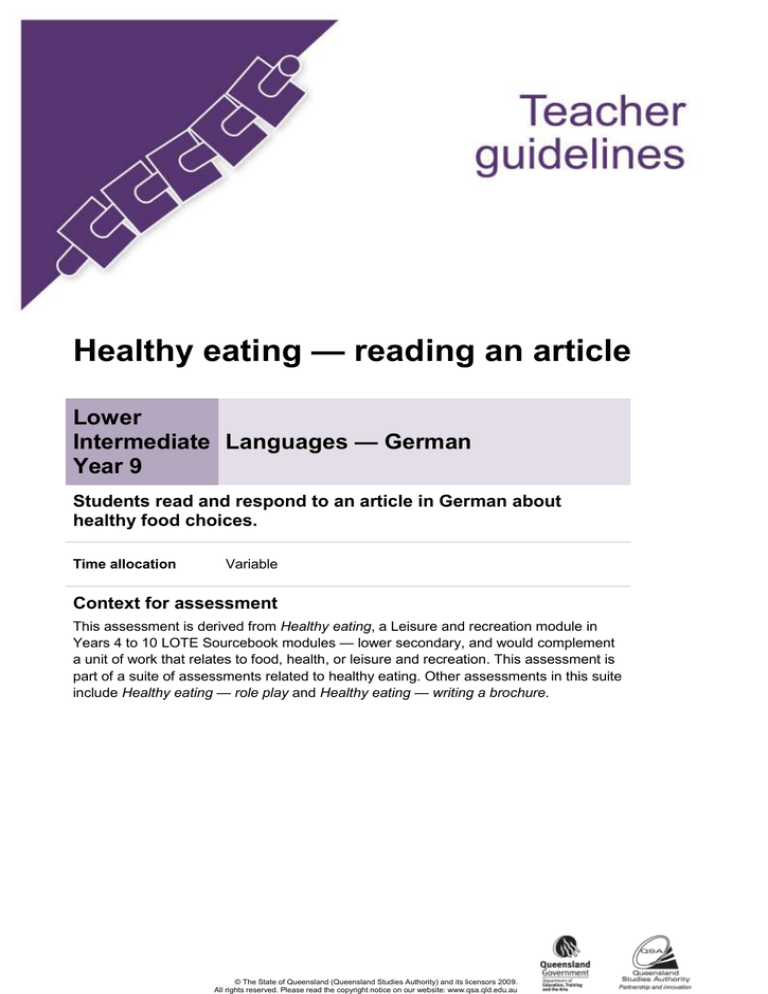
Healthy eating — reading an article Lower Intermediate Languages — German Year 9 Students read and respond to an article in German about healthy food choices. Time allocation Variable Context for assessment This assessment is derived from Healthy eating, a Leisure and recreation module in Years 4 to 10 LOTE Sourcebook modules — lower secondary, and would complement a unit of work that relates to food, health, or leisure and recreation. This assessment is part of a suite of assessments related to healthy eating. Other assessments in this suite include Healthy eating — role play and Healthy eating — writing a brochure. © The State of Queensland (Queensland Studies Authority) and its licensors 2009. All rights reserved. Please read the copyright notice on our website: www.qsa.qld.edu.au Teacher guidelines This assessment gathers evidence of learning for the following Essential Learnings: Languages Essential Learnings by the end of Lower Intermediate Stage Ways of working Knowledge and understanding Students are able to: Comprehending and composing in the target language interpret ideas and information in spoken and written texts and make judgments about the ways that people, places, events and things are represented notice and compare beliefs, values and practices in target language texts to identify the author’s purpose and audience. Comprehending and composing texts for particular purposes, contexts and audiences requires knowledge about the interrelations among purpose, text type, audience, mode and medium. Context, vocabulary and syntax combine to provide cues to the purpose and meaning of texts. Assessable elements Knowledge and understanding Comprehending texts Source: Queensland Studies Authority 2007, Languages Essential Learnings by the end of Lower Intermediate Stage, QSA, Brisbane. 2 Lower Intermediate Year 9 Languages — German: Healthy eating — reading an article Listed here are suggested learning experiences for students before implementing this assessment. Listen to teenagers from different cultural backgrounds talk about what they might eat in a day. Teachers may use Appendix A: On a school day, I often eat … for this activity. Identify types of food that should be eaten every day for good health, and those that should be eaten only occasionally. See Appendix B: The Australian guide to healthy eating. Note: Consider and explain to students the importance of respecting diversity between cultures in the context of diet, e.g. students from some groups in Australian society may choose not to eat in social contexts. When choosing foods to discuss, include foods and meals from a variety of cultures. Survey class members in the target language to find out how their preferences and eating habits fit within the recommendations made in Appendix B: The Australian guide to healthy eating. Note: When asking students about the foods they eat, teachers should use a sensitive and non-judgmental approach. Some students may not wish to disclose their eating habits and routines. Investigate any special dietary requirements of class members or other willing participants. Use Appendix B: The Australian guide to healthy eating and Appendix C: Wo sind die Nährstoffe im Essen? Analyse food labels to examine the nutritional value of various foods. Appendix D: Nutrition information, and Appendix E: Nutritional breakdown, provide useful information for this activity. Give students opportunities to read articles as part of classroom activities leading up to the assessment. Revise any key text structures and language elements targeted for assessment. Students should have significant opportunity for hands-on practice of required language elements. Teacher resources Appendix A On a school day I often eat … Appendix B The Australian guide to healthy eating Appendix C Wo sind die Nährstoffe im Essen? Appendix D Nutrition information Appendix E Nutritional breakdown 3 Teacher guidelines Preparing Explain the assessment to your class and ensure that all students have had enough opportunities to engage with the targeted Essential Learnings before the assessment. Determine the conditions for the activity (e.g. individual or group work). Ensure students will have an appropriate working environment and enough support to complete the assessment (e.g. determine whether students will work with or without dictionary support). Print any relevant and required resources. Consider what objects could be offered as a stimulus for students to complete the assessment. Implementation Students read and respond to an article about healthy snack food choices. The assessment could take place within a 70-minute lesson. Use the support strategies from everyday practice and appropriate for the assessment conditions for students who may require additional support to complete the assessment. 4 Lower Intermediate Year 9 Languages — German: Healthy eating — reading an article During the learning process, you and your students should have developed a shared understanding of the curriculum expectations identified as part of the planning process. After students have completed the assessment, identify, gather and interpret the information provided in student responses. Use only the evidence in student responses to make your judgment about the quality of the student learning. Refer to the following documents to assist you in making standards-referenced judgments: Guide to making judgments Indicative A response Sample responses (where available). For further information, refer to the resource Using a Guide to making judgments, available in the Resources section of the Assessment Bank website. Evaluate the information gathered from the assessment to inform teaching and learning strategies. Involve students in the feedback process. Give students opportunities to ask follow-up questions and share their learning observations or experiences. Focus feedback on the student’s personal progress. Emphasise continuous progress relative to their previous achievement and to the learning expectations — avoid comparing a student with their classmates. Teachers may choose to give individual feedback to students or whole class comments as needed. For further information, refer to the resource Using feedback, available in the Resources section of the Assessment Bank website. 5 Appendix A On a school day I often eat … Julian aus Paris, Frankreich: Guten Tag. Ich heiße Julian und ich wohne in Paris. Das ist in Frankreich. Was ich zum Frühstück esse? Normalerweise esse ich Cornflakes mit Milch. Ich esse auch Brot mit Butter und Marmelade. Dazu trinke ich Kakao. Mein Mittagessen esse ich in der Schule. Dort haben wir eine Kantine. Ich esse Tomatensalat, Steak und Kartoffelbrei. Ich esse Obst zum Nachtisch. Zum Abendessen esse ich Gemüsesuppe, ein Omelette und Käse mit Obst. Ich esse auch Brot dazu. Meiling aus Kunming, China: Hallo. Ich heiße Meiling und ich wohne in Kunming. Das ist in China. Zum Frühstück esse ich heiße Reissuppe mit Brot. Zum Mittagessen esse ich Reis mit Würstchen. Ich mag Würstchen gern. Dazu trinke ich eine Tasse chinesischen Tee. Zum Abendessen esse ich Tomatensuppe mit Ei. Ich esse auch Reis mit Fleisch. Dazu trinke ich chinesischen Tee. Asla aus München, Deutschland: Hallo, ich bin Asla und ich wohne in München. Das ist in Deutschland. Zum Frühstück esse ich Cornflakes mit Milch und Zucker. Ich esse auch ein Brötchen mit Butter und Marmelade. Ich trinke Tee. Zum Mittagessen esse ich Fleisch mit Kartoffeln und Gemüse. Meine Schule ist mittags aus. Also esse ich mein Mittagessen zu Hause. Ich trinke Orangensaft. Zum Abendessen esse ich Butterbrote und ich trinke Tee. Insoo aus Seoul, Korea: Guten Tag. Ich heiße Insoo und ich komme aus Seoul. Das ist in Korea. Zum Frühstück esse ich Toast mit Butter und Marmelade. Ich esse auch ein Ei. Dazu trinke ich Milch. Zum Mittagessen esse ich Reis mit Fisch. Ich esse in unserer Schulkantine. Ich trinke Limonade. Zum Abendessen esse ich Fleisch mit Reis und ich trinke Tee. Ichiro aus Osaka, Japan: Hallo, ich heiße Ichiro und ich wohne in Osaka. Das ist in Japan. Zum Frühstück esse ich Reis und Misosuppe. Ich esse auch gegrillten Fisch, Seetang oder Salat. Ich trinke grünen Tee. Mein Mittagessen esse ich in der Schule. Ich bringe es von zu Hause mit. Ich esse Reis mit Seetang und Salat. Ich trinke Trinkyoghurt. Zum Abendessen esse ich Misosuppe, Reis und Fisch. Ich trinke grünen Tee. Zum Nachtisch esse ich etwas Obst. Appendix A Carmen aus Rom, Italien: Hallo. Ich heiße Carmen und ich komme aus Rom. Das ist in Italien. Ich bin 14 Jahre alt. Zum Frühstück trinke ich Kaffee mit Milch. Ich esse Cornflakes mit Milch. Mein Mittagessen esse ich in der Schule. Ich esse Pizza und Obst. Zum Abendessen esse ich Nudeln mit Gemüse. Manchmal trinke ich Limonade dazu. Ani aus Jakarta, Indonesien: Guten Morgen. Ich bin Ani und ich wohne in Jakarta. Das ist in Indonesien. Zum Frühstück esse ich gebratenen Reis mit Ei. Ich esse auch Hähnchen und ich trinke Milch. Mein Mittagessen esse ich nicht in der Schule. Ich gehe nach Hause und esse da mein Mittagessen. Ich esse Hühnersuppe, Reis und etwas Obst. Zum Abendessen esse ich Reis und Fleisch mit Sataysoße. Zum Nachtisch esse ich etwas Obst. Appendix B The Australian guide to healthy eating Gemüse, Bohnen Obst Brot, Müsli, Reis, Nudeln Milch Joghurt Käse Mageres Fleisch, Fisch, Geflügel, Eier, Nüsse, Bohnen Trinke viel Wasser Iss von diesen manchmal oder in kleinen Mengen Appendix C Wo sind die Nährstoffe im Essen? Wo im Essen sind die Kohlenhydrate? Kohlenhydrate sind in Brot, in Weetbix, Müsli und in Nudeln. Kohlenhydrate sind auch in Kartoffeln. Wenn du Sport treibst oder wenn du dich viel bewegst, dann brauchst du viele Kohlenhydrate. Kohlenhydrate sind gut für dich. Sie geben dir Energie. Sie haben auch Ballaststoffe, damit du gut zur Toilette gehen kannst. Wo im Essen ist der Zucker? Zucker ist in Bonbons und Süßigkeiten. Zucker ist auch in Schokolade. Zucker ist in den meisten Kuchen und in Eiscreme. Zucker ist schlecht für deine Zähne. In Cola, Fanta und anderen Limonaden ist auch viel Zucker. Zu viel Zucker macht deine Zähne kaputt. Pass auf und iss nicht zu viel Zucker! Isst du zu viel Zucker, dann wird der Zucker in deinem Körper zu Fett. Zucker gibt deinem Körper Energie. Aber es ist keine gute Energie. Sie kommt und verschwindet sehr schnell. Appendix C Wo im Essen sind die Proteine? Wenn du Fleisch isst, dann isst du auch Proteine. Proteine sind gut für dich. Proteine sind auch in Milch, Käse und in Bohnen. Proteine brauchst du zum Wachsen. Darum brauchen Kinder besonders viele Proteine. Isst du zu viele Proteine, dann werden die Proteine in deinem Körper zu Fett. Proteine sind gut für dich, aber zu viele Proteine sind nicht gut. Wo im Essen sind die Vitamine? Obst und Gemüse haben viele Vitamine. Orangen und Zitronen haben viel Vitamin C. Anderes Obst und Gemüse haben viele andere Vitamine, Wasser und Ballaststoffe. Das ist gut gegen Erkältung. Karotten und Kürbis haben viel Vitamin A. Das ist gut für die Augen und für gesunde Haut. Vitamine sind gut für dich. Isst du viele Vitamine, so wirst du nicht so schnell krank. Also iss viel frisches Obst und Gemüse. Dann bekommt dein Körper genug Vitamine, Mineralien und Ballaststoffe. Appendix C Wo im Essen ist das Fett? Fett gibt dem Körper Energie und Vitamine A, D, E und K. Isst du zu viel Fett, dann bleibt es als Fett in deinem Körper. Oft ist das Fett im Essen versteckt. Kartoffelchips werden in Öl gebraten. Also haben sie Fett. Viele Leute essen zu viel Fett. Pass auf und iss nur sehr wenig Fett. Wenn du viel Butter, Margarine oder Öl isst, dann isst du auch viel Fett. Wenn du Pommes frites isst, dann isst du auch viel Fett. Mineralien Mineralien sind wichtig für gesundes Körpergewebe und um die Körperfunktionen zu regulieren. Wir sollten kein zusätzliches Salz zum Essen hinzufügen. Natrium, das bereits im Essen vorhanden ist, reicht aus. Wenn man zu viel Salz isst, kann man zu hohen Blutdruck bekommen. Pflanzliches Fett ist besser als tierisches Fett. Von zu viel Fett kann man Herzkrankheiten bekommen. Appendix D Nutrition information Nährwerte von deutschen Packungen: VOLLKORNREIS Nährwerte Portionen pro Packung: 7 1 Portion: 70 g pro Portion pro 100 g ENERGIE 1 020 kj (244 cal) 1 457 kj (348 cal) PROTEIN 5,2 g 7,4 g FETT 1,8 g 2,5 g KOHLENHYDRATE 54,2 g 77,4 g BALLASTSTOFFE 2,8 g 4,0 g CHOLESTERIN 0,0 g 0,0 g NATRIUM 1,4 mg 2,0 mg KALIUM 168 mg 240 mg KARTOFFELCHIPS Nährwerte Portionen pro Packung: 4 1 Portion: 50 g pro Portion pro 100 g ENERGIE 105 kj 210,2 kj PROTEIN 3,3 g 6,5 g FETT 16,1 g 32,2 g KOHLENHYDRATE 20,9 g 41,7 g BALLASTSTOFFE 3,3 g 6,6 g CHOLESTERIN 0,0 mg 0,0 mg NATRIUM 130 mg 259 mg KALIUM 315 mg 629 mg Appendix E Nutritional breakdown Nährwerte Name des Essens Fett (g) Natrium (Salz – g) Zucker (g) Kilojoule Große Portion Pommes frites 29 300 0 2 215 Fleischpastete 26 900 8 1 880 Hamburger 24 840 7 2 090 8 250 0 585 Pizza 33 1 550 3 2 885 Lasagne 16 600 0 2 300 Butterbrot mit Schinken und Salat 17 900 4 1 255 Fisch mit Pommes frites 35 600 5 2 510 Schokoladenriegel 15 0 30 1 110 0 0 40 645 Schmalzkuchen 10 180 10 1 045 süßes Brötchen 19 0 20 940 Orangensaft 0 0 50 495 Kartoffelchips 15 130 0 630 Hähnchenkeule Dose Cola oder Fanta
